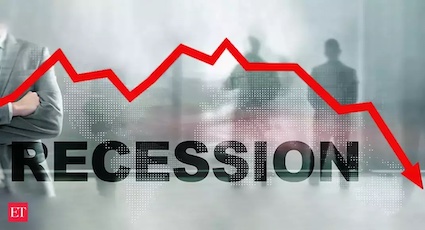Dark clouds over Malaysia’s economic horizon

Murray Hunter
With the news the Malaysian economy expanded by 5.6 percent over the first quarter of 2023 (Q1 2023), Putrajaya is being lured into a bubble of complacency over the economy. Afterall, Bank Negara Malaysia (BNM) unexpectedly raised the OPR rate to 3.9 percent. This was consistent with the data that shows strengthening economic performance.
However, gross exports declined by 17.4 percent year on year, over April 2022, for the first time in two years. This is a potential indicator of dark storm clouds over Malaysia’s economic horizon, with commodity price earnings, and poor global growth prospects for the rest of 2023. This has also brought Malaysia’s trade surplus down to RM 12.9 billion, from RM 26.7 billion in March, which is the lowest trade surplus for a year.
BNM is forecasting Malaysia’s economic growth between 4-5 percent this year. However, BNM’s recent interest rate rise might be part of the problem in restricting liquidity. The stock market is sluggish, the Ringgit is still falling, the cost of living is still rising, especially within the food sector, and bankruptcies still remain high, even though there were amendments to regulations to keep the numbers down. Most importantly, Malaysia’s middle class is getting poorer, struggling to pay for food, rent, and debt.
It appears the BNM has raised interest rates based upon economic data, without looking further beyond the figures.
Malaysia will continue to feel the spill-over effects from the supply chain disruptions occurring from the Russia-Ukraine war. Accompanied by the weakening of the US financial sector, the flip of Europe and the United States into recession, and the weakening of demand from China, this will all add to the woes of Malaysians. The ability of households to cope with the continuing rise in the cost of living is becoming much more difficult as the majority of households have already depleted their savings during the Covid MCOs, and haven’t recovered. Much of the middle class is finding it very difficult to meet their monthly budget requirements.
The rate of poverty is still on the increase. However, as the World Bank has pointed out, data on this indicator requires a major update.
Many of the international forecasting and reporting agencies are in the process of modifying their forecasts for Malaysia.
Hybrid-stagflation
There is a probability, Malaysia could slip into some form of hybrid-stagflation, where the definitions and solutions have not yet been written up in any university textbooks. Malaysia potentially faces a downturn in economic activity in both the external and domestic sectors, with a renewed bout of inflation, and erosion of household incomes.
Bureaucracy galore
Malaysia has not less than four ministries responsible for economic matters. These include the finance ministry, Economy, international trade and industry, and domestic trade and cost of living. All these are run by senior ministers, including the prime minister, who doubles as the minister of finance.
Below these ministries are wall to wall economic advisors and consultants. Some are ex-politicians, some are senior people from the banking and finance industry, mostly recycled people, who think along establishment lines. We saw the limitations in establishment thinking with the BNM interest decision, which has increased hardship on the majority of households and SMEs in the country.
The economic solutions must be creative. The policies required to steer Malaysia out of the way of a coming storm will have to be novel. This is going to require very wise, and ‘out of the box’ thinking. The concern is whether the current set of advisors and consultants can come up with the necessary solution without hurting Malaysians even more.
The recent federal budget forecast a deficit of 5.5 percent of GDP. This makes the budget expansionary, and raises the government debt/GDP ration to 73.3 percent this year. This is high in relative terms to other countries. Debt repayment is the second highest item in the budget, where 18.5 percent is allocated just to repaying public debt.
Shortfalls in income collection, economic growth, and leakages will increase this deficit.
The money supply is still growing, where many countries have put the brakes on money supply growth to try and curb inflationary pressure. This is partly the result of an expansionary budget and growing public debt.
Public sector
Public sector spending must be curtailed, and public institutions made more efficient and productive. Government linked companies must be scrutinized for their efficiency, productivity, profits, and benefits to the people. Those which don’t meet these criteria should be immediately shutdown, or sold off on the open market. The civil service has been bloated by successive administrations using this institution to absorb employment. Many institutions carry out ineffective activities that have no public benefit. The whole public sector should be placed under the scrutiny of zero-based budgeting to force efficiency.
Ministers and advisors not taking salaries or working pro-bono is just virtue signalling. The whole public sector must be subjected to zero-based budgeting if the virtue signalling is to be sincere.
The government must come up with a plan to free up the economy from regulation and monopolies that benefit only selected groups. These government interventions are policies of the 50s and 60s and best left form central command economies or communist countries to practice. Malaysia must embrace a free market to promote improvements in productivity, rather than try to legislate and set up agencies to achieve. Crony capitalism must be broken up. Crony capitalism is the largest form of corruption in the country.
The government must walk the talk on a minimum safety net for Malaysians. This was the policy of both Pakatan Harapan and UMNO before the election. The government must come good with this promise at a time Malaysians are in need of it.

